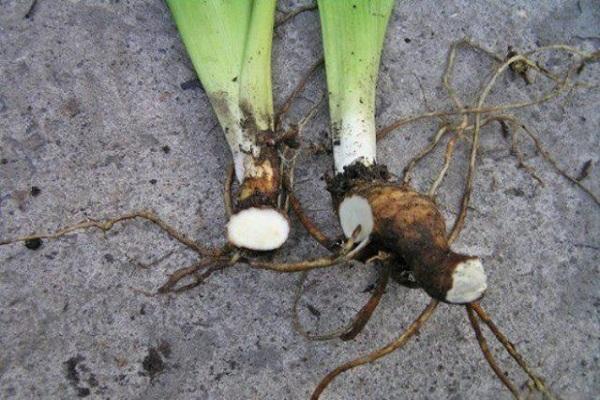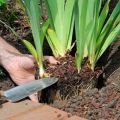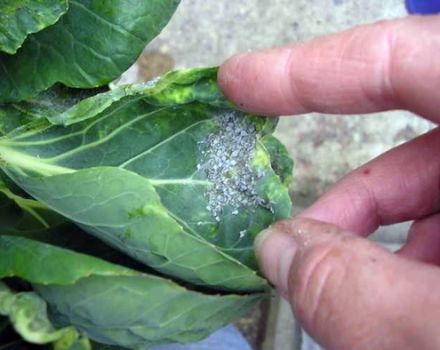How to transplant irises in the fall to another place, terms and rules for leaving after
Many flower growers plant flowers such as irises in their flower beds. One of the rules for caring for such a plant is the timely transplantation of the planted flowers. Therefore, before planting, you need to familiarize yourself with the timing and features of transplanting irises to another place in the fall.
Content
- 1 Why transplant irises?
- 2 When is the best time to replant irises?
- 3 Favorable time for transplant
- 4 Table of the timing of division and transplantation of irises, depending on the region
- 5 Transplant methods
- 6 How to transplant irises correctly?
- 7 Post-transplant care rules
- 8 How to protect freshly transplanted plants from diseases?
- 9 Conclusion
Why transplant irises?
People who have not previously been involved in growing flowers do not understand why they are transplanted in late summer or early autumn. Experts recommend moving irises to another place due to the fact that they have a weakened root system. In addition, during cultivation, a young link is formed on the roots, which gradually increases. If the flower is not transplanted in a timely manner, it will die due to night frosts and a lack of nutrients.
Some people think that they should be replanted annually, but this is not the case. In the first few years after planting, the plant copes with frost. It begins to weaken gradually, and therefore flowers are planted in a new place every 3-4 years.
When is the best time to replant irises?
In order for the transplanting process to pass without problems, it is necessary to determine the optimal time for carrying out such work. Experienced flower growers recommend doing this 2-3 weeks after the flowering of the inflorescences. During this period, the growth of the root system is activated, due to which the flower will take root faster after transplantation. Planting irises is practiced both in early spring and in autumn.
Favorable time for transplant
To accurately determine the favorable time for planting flowers, you need to familiarize yourself in more detail with the autumn and spring periods of work.

In the spring
In regions where there are no prolonged frosts, the transplant is carried out in the spring.
In March
In early spring, you can plant flowers if the air temperature does not drop below zero. Therefore, planting is carried out in the second half of the month, after warming.
In April
If the air temperature in April is stable at 5-10 degrees Celsius, then you can start transplanting tubers to a new place. In this case, the procedure is carried out on a sunny day.
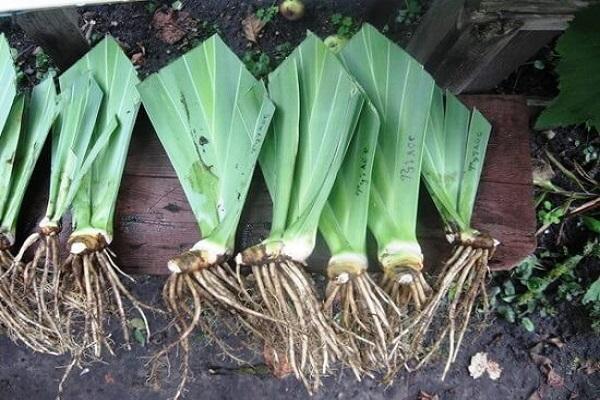
In May
People who choose to replant flowers in the spring most often do so in May.The last month of spring is ideal for spring planting, as temperatures do not drop below freezing during this time, even at night.
Summer transfer
Some do not have time to transplant irises in spring and therefore do this summer.
In June
In some iris varieties, root growth begins in early summer, and therefore the transplant is carried out in mid-June. Experts advise replanting the plant before the summer heat begins.
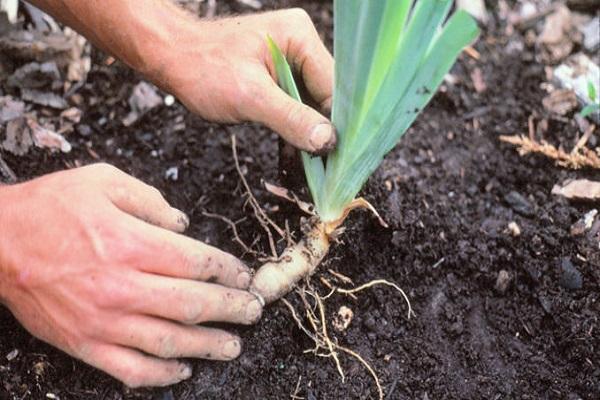
In July
In July, transplants are carried out less often, since most often this month the air temperature is high.
In August
August is considered the most suitable summer month for digging and planting irises. In most varieties, intensive root development begins in this month.
In autumn
A large part of flower growers plant irises in the fall.
In September
Experienced gardeners believe that an autumn transplant should be carried out in September, before the frost begins. It is best to do this in the middle of the month, after flowering.

In October
People who did not manage to transplant flowers in September do this in October. In this case, it is necessary to plant flowers in the first half of the month.
In November
It is not recommended to plant irises in November, as night frosts begin this month.
Table of the timing of division and transplantation of irises, depending on the region
Before transplanting flowers, you need to familiarize yourself with the transplantation timetable. This will help determine when to plant irises in the Moscow Region and other regions.
| Region | Timing of division and transplant |
| Southern | March-April / September-October |
| Middle lane | May-June / September |
| Northern | July August |
Transplant methods
Before transplanting irises, you need to familiarize yourself with the basic transplantation methods.
The technology of dividing bearded irises
The process of dividing flowers by this method is carried out in several stages:
- Digging. First, the plants are carefully dug out with a pitchfork or a small spatula.
- Cleaning from dirt. The dug out bulbs are shaken off and cleaned of adhering soil.
- Flushing. The bulbs are washed in a solution made from Zircon.
- Pruning. All irises are dried and carefully trimmed to a height of 8-12 centimeters.
- Transfer. The cut bulbs are transplanted to a new location.
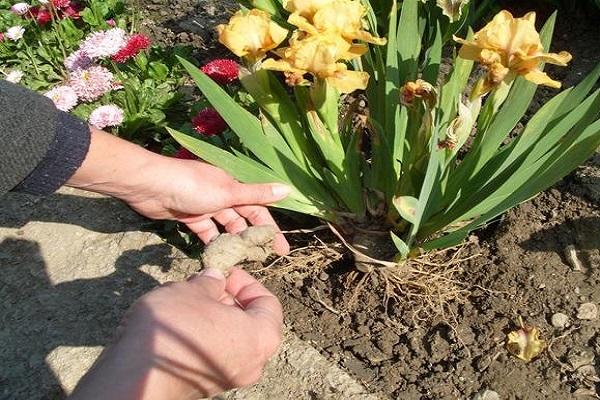
Transplanting Siberian irises
To transplant Siberian varieties of irises, all the bushes are carefully dug out of the flower bed. Then the new site where the flowers will be planted is fertilized with organic and mineral fertilizing. After fertilizing, at a distance of 40-45 centimeters, holes are dug into which irises are planted. The transplanted flowers are sprinkled with soil and watered abundantly with warm water.
Division of bulbous irises
To carry out the division of the bulbous flowers, it is necessary to dig up all the plants. Then the bulbs are washed with water, soaked for 10-15 minutes in a manganese solution and dried. After that, the dried young bulbs are separated from the old ones and transplanted to another place.
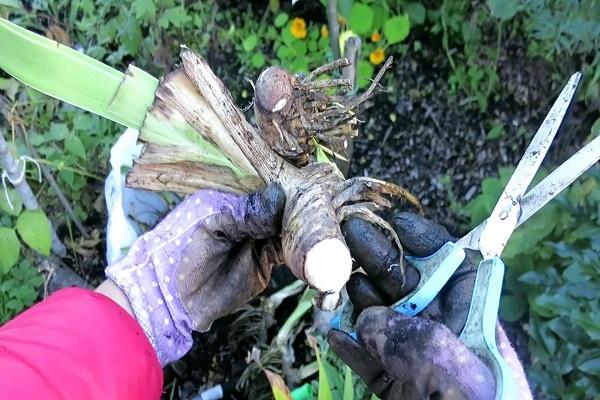
How to transplant irises correctly?
To transplant flowers correctly, you need to understand the features of their transplantation.
Plant preparation
Before transplanting, the bulbs must first be prepared. They must be soaked in a manganese solution, which is made from manganese, boric acid, cobalt and magnesium sulfate. This mixture promotes the growth of the flower and has a beneficial effect on its flowering. Soaking is carried out for 20-30 minutes.
How to prepare the soil
Despite the fact that irises are unpretentious to the soil, it is still better to prepare the site in advance. Florists recommend adding a little superphosphate with ash and humus to the ground. Also, the soil is mixed with river sand, clay and compost so that it better permeates moisture and oxygen.
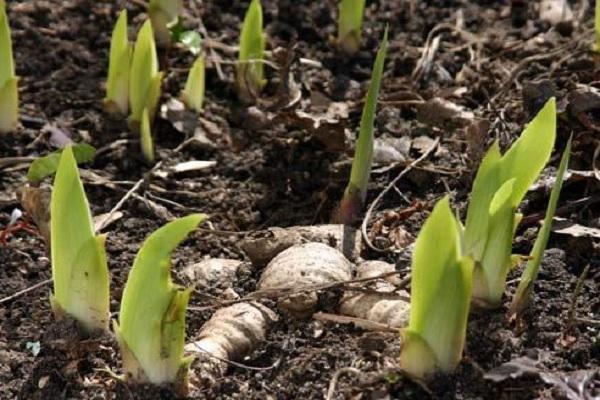
Rhizome division
Before dividing, all dug out bushes are thoroughly washed with water to clean them of dirt. Then the leaves with the roots are cut by a third, after which the bush is divided with a knife into planting divisions. The procedure is carried out very carefully so as not to accidentally damage the root system.
Landing in the ground
First, landing holes are made on the site with a depth of 25-35 centimeters. Then planting material is carefully placed in them. Planted plants must be watered with water so that they take root faster.
Post-transplant care rules
The transplanted irises must be properly looked after so that they do not fade.
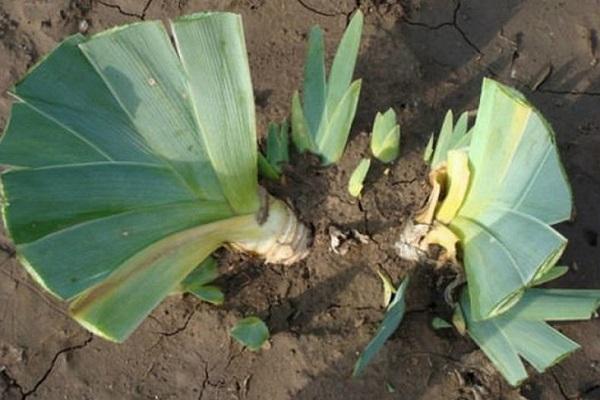
Watering
It is recommended to regularly water the plant so that it has enough moisture. In dry summer weather, the soil is moistened every day. In this case, watering is done very carefully so that water droplets do not fall on the petals or leaves.
Pruning
Cultivated irises need to be pruned periodically. Most often, dried flowers or leaves are cut off. For the procedure, sharpened scissors or secateurs are used. It is contraindicated to tear off the leaves with flowers with your hands.
Preparation for wintering
Before frost, all planted flowers are covered with a layer of mulch 20-30 centimeters thick. Such a protective shelter will protect the plant from frost and help it overwinter.

How to protect freshly transplanted plants from diseases?
Irises, like many other plants, are infected with various diseases. To protect the seedlings from diseases, they are sprayed with fungicidal agents every 2-3 weeks. The most effective treatment is considered to be carried out one and a half months before flowering.
Also, regular cleaning of the site from weeds and dried plants will help prevent the development of diseases.
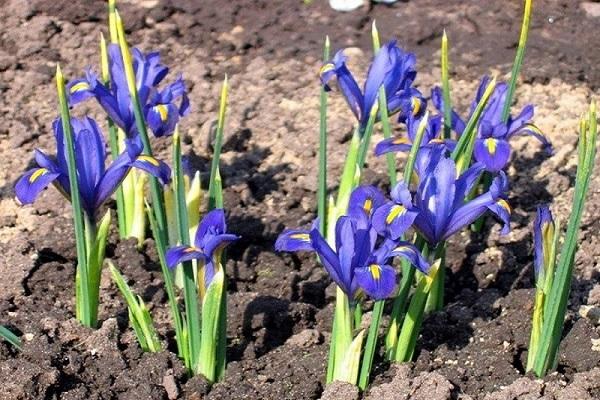
Conclusion
People who are going to grow irises will have to periodically transplant them to another place. It is recommended to understand in advance the optimal timing and features of flower transplantation.

